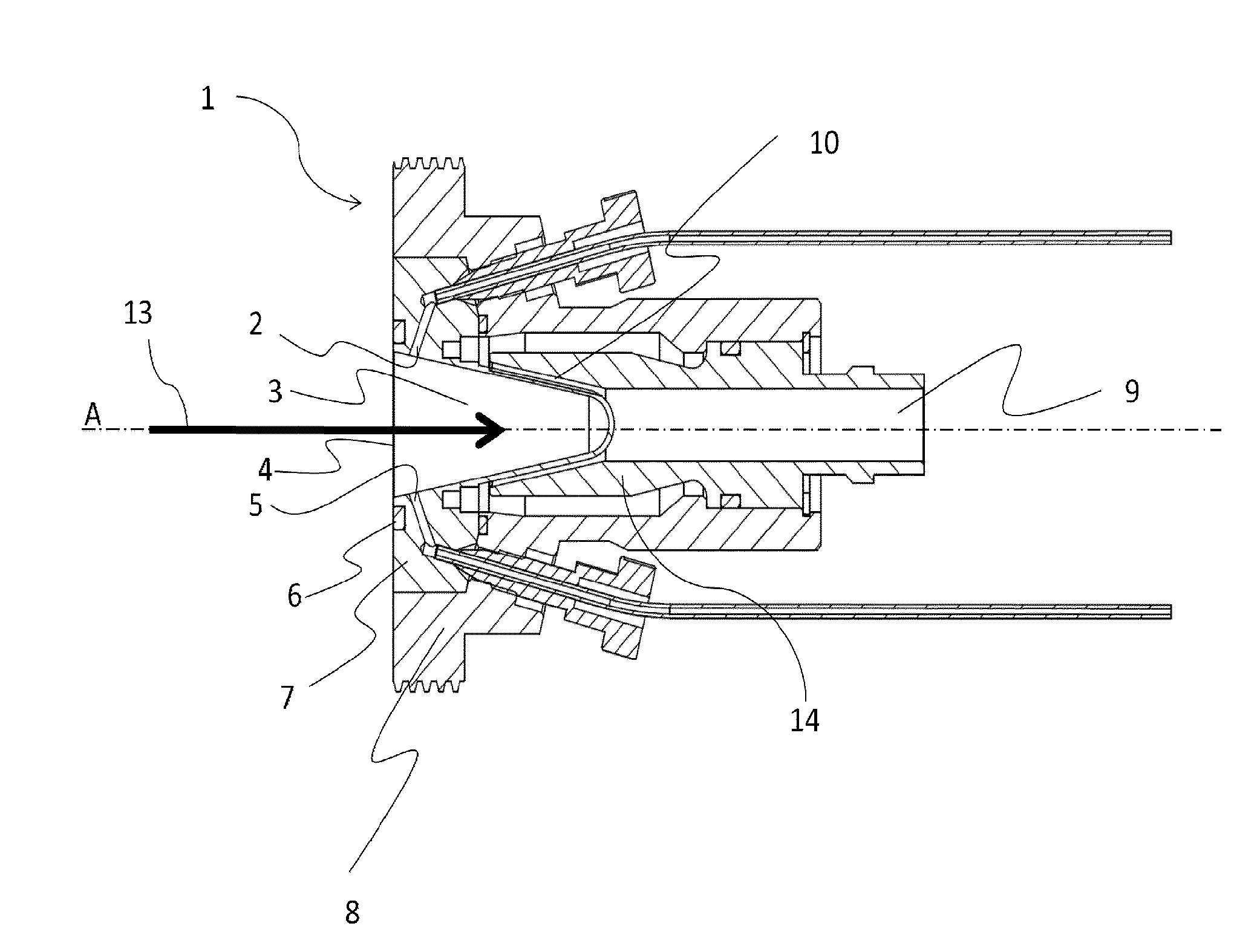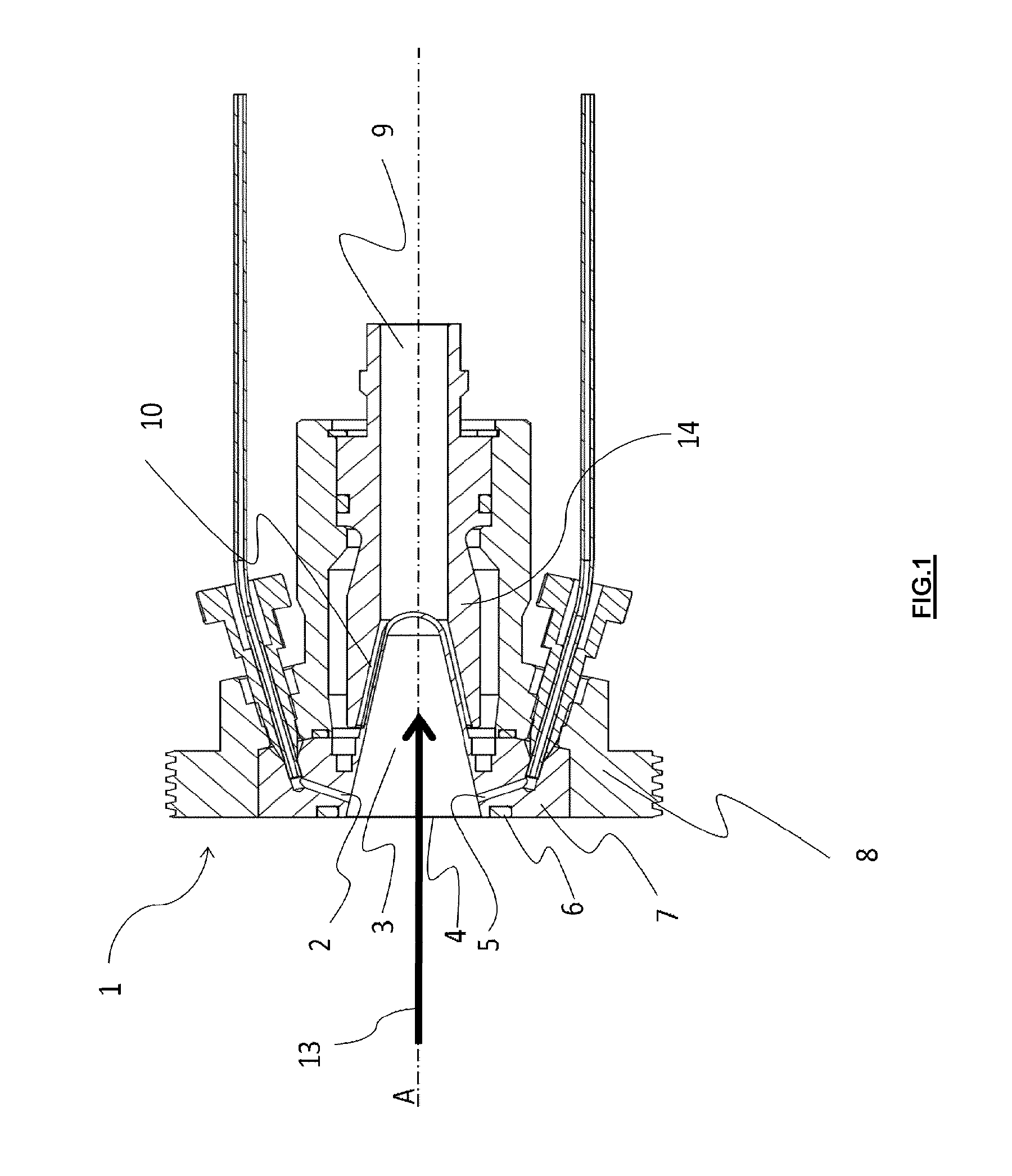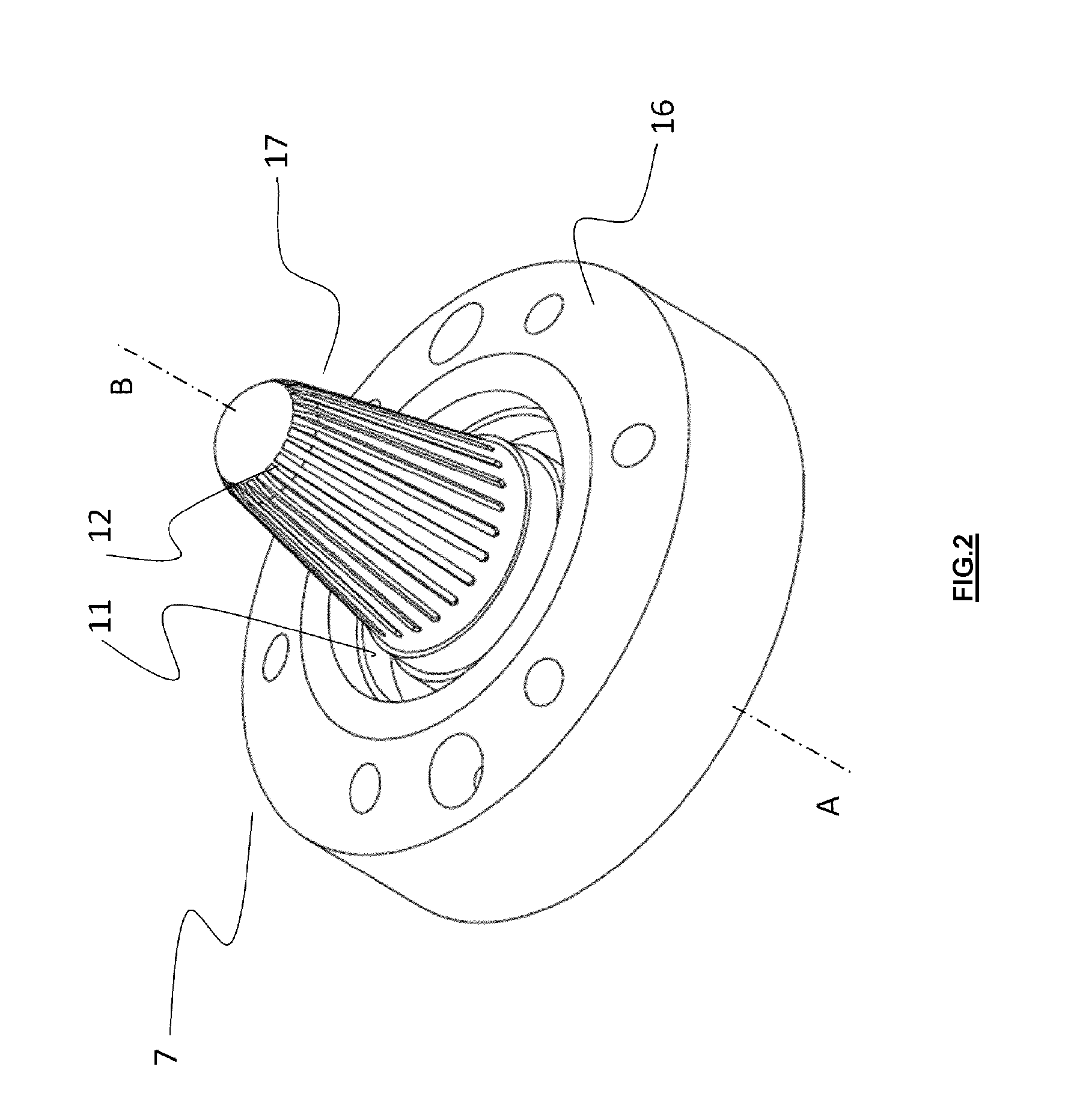Device For Producing Radioisotopes
a radioisotope and device technology, applied in the direction of radioactive sources, chemical to radiation conversion, electrical apparatus, etc., can solve the problems of reducing the stopping power of the precursor and therefore the radioisotope production yield, the sealing of the irradiation cell, and the heat dissipation produced by the irradiation of the target material on such a small volume, so as to achieve the effect of improving the cooling devi
- Summary
- Abstract
- Description
- Claims
- Application Information
AI Technical Summary
Benefits of technology
Problems solved by technology
Method used
Image
Examples
Embodiment Construction
[0043]The device according to the present invention is designed to be used in the context of radioisotope production, in particular through irradiation of a target fluid using an accelerated particle beam. One preferred use of the device 1 according to the present invention is the production of 18F through bombardment using an accelerated proton beam 13 on 18O-enriched water. Preferably, the beam 13 is substantially horizontal.
[0044]FIG. 1 shows a longitudinal cross-section of part of the device 1 according to one embodiment of the present invention. The device 1 of the present invention comprises an irradiation cell 7 shown in a three-dimensional view in FIG. 2. The irradiation cell 7 comprises a cavity 3 designed to contain a target fluid, for example 18O-enriched water. As indicated in FIG. 3, the cavity 3 has an upper (or top) part 19 (located above the plane A-B) and a lower (or bottom) part 20 (located below the plane A-B). During operation, the plane A-B is substantially hori...
PUM
 Login to View More
Login to View More Abstract
Description
Claims
Application Information
 Login to View More
Login to View More - R&D
- Intellectual Property
- Life Sciences
- Materials
- Tech Scout
- Unparalleled Data Quality
- Higher Quality Content
- 60% Fewer Hallucinations
Browse by: Latest US Patents, China's latest patents, Technical Efficacy Thesaurus, Application Domain, Technology Topic, Popular Technical Reports.
© 2025 PatSnap. All rights reserved.Legal|Privacy policy|Modern Slavery Act Transparency Statement|Sitemap|About US| Contact US: help@patsnap.com



